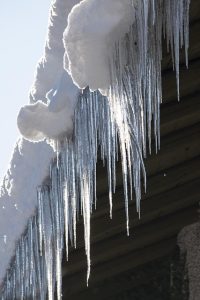House hunting in the winter presents unique challenges and opportunities. The colder months reveal aspects of a home that may be hidden in warmer seasons. Here’s what to focus on to ensure a well-informed decision.
decision.
Roof and Gutters Under Pressure
Snow and ice can expose weaknesses in a roof that might not be obvious in the summer. Look for uneven melting patterns, which can indicate poor insulation or ventilation issues. Ice dams along the eaves suggest ineffective drainage. Gutters should be intact and securely attached—heavy snow can pull them loose over time.
Heating System Performance
A home’s heating system will be working at full capacity in the winter, making this the best time to assess its efficiency. Listen for unusual noises, note any cold spots in rooms, and verify that all vents produce warm air. A furnace that struggles to maintain temperature could signal maintenance needs or inefficiencies. Request service records to gauge how well the system has been maintained.
Windows and Doors: Draft Detection
Cold air infiltration around windows and doors is more noticeable in winter. Run your hand along frames to feel for drafts, and check for condensation between double-pane windows—a sign of a broken seal. Well-insulated homes should retain warmth with minimal heat loss through these areas.
Foundation and Exterior Inspection
Frozen ground can make it harder to spot cracks or shifts in a foundation, but there are still clues to look for. Uneven doors and windows, gaps along the siding, and interior wall cracks may indicate structural movement. Snow accumulation against the foundation should be minimal, as excess moisture can lead to future issues.
Driveway and Walkways
A home’s approach should be safe and manageable in icy conditions. Observe whether the driveway is plowed or if it has excessive ice buildup, which could indicate drainage issues. Sloping or sinking sections of concrete may become hazardous when wet or frozen.
Basement and Attic Clues
A damp or musty-smelling basement often signals poor drainage or foundation leaks. In the attic, check for frost buildup on roof nails, which suggests poor ventilation. Insulation should be evenly distributed, without gaps that could allow heat to escape.
Neighborhood and Seasonal Factors
Winter allows a glimpse of how a neighborhood functions in harsher conditions. Are streets well-plowed? Is there sufficient street parking despite snowbanks? How accessible are driveways and sidewalks? These practical details affect daily life and should not be overlooked.
Buying a home in the winter requires extra attention to details that colder weather exposes. With a thorough inspection and a keen eye, you can identify potential problems before making an investment.








